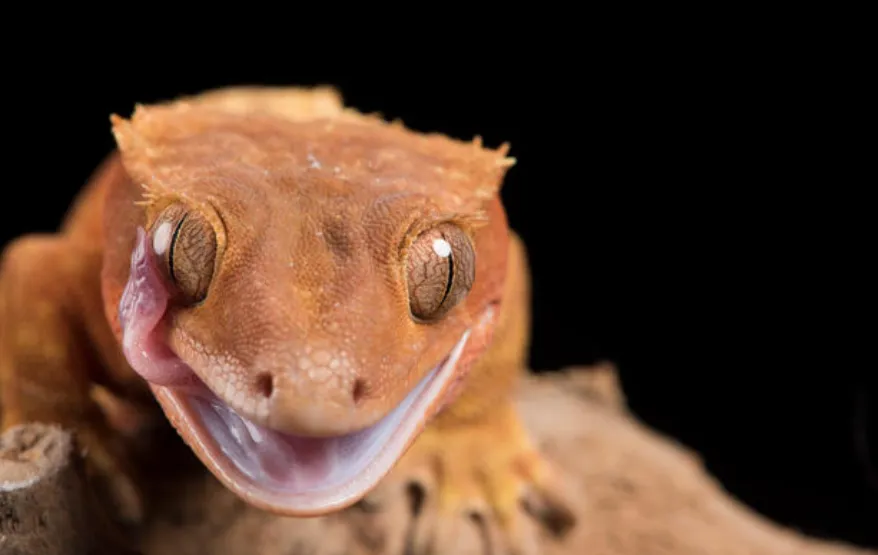
Table of Contents
Scientific Classification
- Kingdom: Animalia
- Phylum: Chordata
- Class: Reptilia
- Order: Squamata
- Suborder: Lacertilia (or Sauria)
- Family: Dactyloidae
- Genus: Correlophus
- Species: C. ciliatus
Quick Overview
The Crested Gecko (Correlophus ciliatus) is renowned for its “eyelash” appearance and varied, vibrant colors. Hailing from New Caledonia’s rainforests, these geckos, once believed extinct, have made a triumphant return, thriving in captivity and captivating reptile enthusiasts worldwide.
Fast Facts
- Scientific Name: “Correlophus ciliatus”
- Lifespan: Up to 5 years in the wild; 10-20 years in captivity
- Average Size: 7-9 inches (including tail)
- Diet: Omnivorous
- Habitat: Tropical rainforests
Did you know?
Crested Geckos are equipped with adhesive toe pads, enabling them to effortlessly climb vertical surfaces and even traverse ceilings.
Appearance
Their iconic crested appearance, similar to eyelashes above the eyes, complements their wide range of colors and patterns, from bright oranges and reds to subtle browns and creams.
Size and Weight
Both male and female Crested Geckos generally measure 7-9 inches in total length and weigh between 30 to 35 grams.
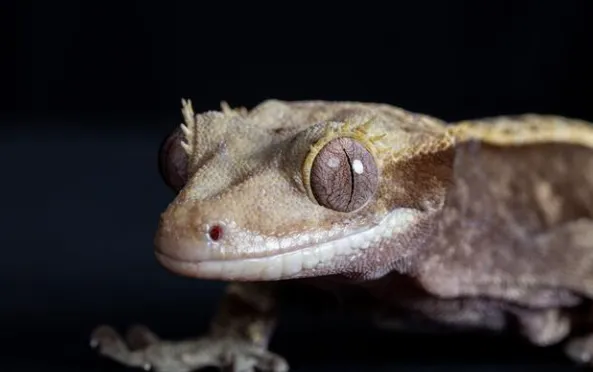
Temperament & Behavior
Primarily nocturnal, Crested Geckos are known for their gentle demeanor in captivity, making them popular pets, especially for beginners.
Fun Fact:
When excited or threatened, Crested Geckos can rapidly move their tail, mimicking the movement of a snake to deter potential predators.
Habitat and Distribution
Native to the tropical forests of New Caledonia, an archipelago located in the southwest Pacific.
Care Guide
In captivity, maintaining the right environment is crucial for their well-being:
- A vertically oriented terrarium to mimic tree trunks and foliage.
- Temperatures between 70-78°F.
- Humidity levels of around 70%, with regular misting to replicate their rainforest habitat.
- Plenty of climbing structures and hiding spots.
- UVB lighting isn’t necessary but can be beneficial.
Diet and Nutrition
Their diet in the wild consists of both insects and fruits. In captivity, a balanced mixture of fruit puree (often commercial crested gecko diet) and insects is ideal.
Fun Fact:
Crested Geckos have a prehensile tail. If they lose it, it doesn’t regrow, making each gecko’s tail truly unique!
Health and Wellness
Typical concerns include metabolic bone disease, shedding issues, and tail loss. As always, regular check-ups with a reptile veterinarian are crucial.
Breeding
After mating, females will lay one to two eggs. These eggs are soft-shelled and can be incubated at room temperature, with hatchlings emerging in 60-90 days.
Conservation Status
While no longer believed extinct, habitat loss in New Caledonia is an ongoing concern. Captive breeding, however, has made them widely available and reduced pressure on wild populations.
Fun Fact:
Crested Geckos’ toes and the tips of their semi-prehensile tails are covered with small hairs called setae, allowing them to cling to almost any surface!
Photo Gallery
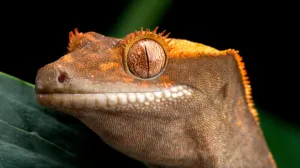


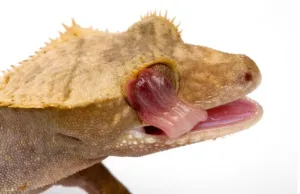

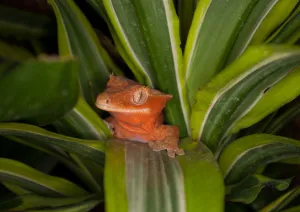
Check out the video below and find out how Crested Geckos change their color:
Related Profiles
Share This Profile:
3 Amazing Facts About Crested Gecko
- From Extinct to Everywhere: The Crested Gecko was believed to be extinct until 1994. Since its rediscovery, it has become one of the most popular pet reptiles globally.
- Sticky Situation: Crested Geckos can walk on glass! Their toes are equipped with tiny hairs that allow them to adhere to even the slickest surfaces.
- Natural Climbers: Living in trees means being agile. Crested Geckos can leap impressive distances, using their tails for balance, making them nimble navigators of the treetops.
- Enchi Ball Python: A Unique and Stunning Morph of Python regius - March 27, 2025
- Emerald Tree Monitor: The Enigmatic Green Guardian of the Rainforest - March 26, 2025
- The Egyptian Cobra (Naja haje): A Fascinating Serpent - March 25, 2025
